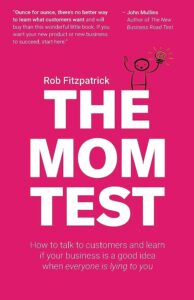Reimagining Project Portfolio Management: Embracing Agile Principles
Project portfolio management plays a vital role in strategically aligning projects with company objectives. Its aim is to determine which projects will yield the highest value and enhance the profitability of a business. However, predicting the future is an inherently uncertain endeavour. This underscores the importance of investing in proficient portfolio managers.
Can agile practices effectively span a vast portfolio encompassing numerous teams and developers? The answer is a resounding yes, thanks to agile portfolio management. Netflix introduced the concept of “highly aligned, loosely coupled” to characterise well-adapted agile portfolio management within a large organisation. In this regard, it is crucial to consider the role of context and autonomy, as well as identify the key attributes commonly found in successful agile portfolios.
What is a Portfolio Manager?
At the heart of effective project portfolio management lies the portfolio manager, entrusted with the task of selecting the optimal projects and programmes to invest in, precisely when the timing is right. Their expertise lies in prioritising the most promising ventures, strategically allocating resources, and diligently overseeing their progress to guarantee a favourable return on investment (ROI) for the organisation.
Portfolio Management Frameworks

In the realm of portfolio management, various frameworks offer valuable guidance. PRINCE2 stands out by prioritising robust business cases, making it a favourable choice for large organisations seeking comprehensive solutions. On the other hand, the PMBOK method places greater emphasis on individual knowledge and relies heavily on documentation throughout the process.
However, arguably the most prevalent frameworks in portfolio management are Agile and Lean. These methodologies have gained significant popularity due to their adaptive and streamlined approaches, enabling organisations to navigate complex projects with agility and efficiency.
Traditional vs Agile Portfolio Management
Traditional Portfolio Management
Traditionally, project prioritisation has been accomplished through meticulous planning of detailed project roadmaps, followed by allocating budgets based on these plans. Once funding is approved, the portfolio is set in motion. However, this approach heavily relies on upfront planning and approval, which can be risky in today’s volatile business environment. Consequently, many organisations find themselves attempting to initiate numerous projects simultaneously, inadvertently encountering various drawbacks.
The drawbacks of juggling multiple projects simultaneously are manifold. Teams become overwhelmed by the constant shifting of priorities, leading to reduced productivity. Moreover, the lack of transparency in the management process poses a significant threat, potentially resulting in misalignment between the company’s strategic goals and the execution of projects. Recognizing these challenges, it becomes imperative to explore alternative approaches that address these shortcomings and ensure a more agile and efficient portfolio management process.
Agile Portfolio Management
In response to the challenges posed by traditional approaches, Agile portfolio management emerges as a solution that applies the principles of testing, learning, and adaptation, along with decentralised control, at the portfolio level. Agile prioritisation takes place through rapid feedback loops, enabling portfolio managers to regularly review a specific set of projects and evaluate their alignment with strategic initiatives. Collaborative discussions with project managers and team leaders foster the identification of small experiments to assess projects or enhance product/service delivery. This iterative approach enables the collection of rapid feedback, empowering data-driven decision-making.
Furthermore, Agile portfolio management moves away from the practice of creating highly detailed project roadmaps to secure budgets. Instead, it embraces multi-level planning and cascades decision-making authority downward. This decentralised approach ensures that financial resources are allocated to experiments and value streams within the organisation, rather than being tied to individual projects. By shifting the focus towards holistic value creation, Agile portfolio management facilitates flexibility, adaptability, and responsiveness, fostering a culture of continuous improvement and innovation.
Agile Portfolio Management vs Lean Portfolio Management

Agile and Lean, while distinct methodologies share interconnected practices that enhance their effectiveness. By delving deeper into each approach, we can gain a comprehensive understanding of their synergistic relationship.
Agile methodology emphasises iterative and adaptive project management, enabling teams to quickly respond to changing requirements and deliver incremental value. It fosters collaboration, transparency, and customer-centricity, promoting continuous improvement and learning throughout the project lifecycle.
On the other hand, Lean methodology focuses on eliminating waste and maximising value creation by streamlining processes and optimising resource utilisation. It emphasises value stream mapping, visual management, and continuous flow, aiming for efficiency and reducing non-value-added activities.
Although Agile and Lean have unique characteristics, they complement each other exceptionally well. Agile’s flexibility aligns with Lean’s waste reduction principles, enabling teams to respond swiftly to customer needs while minimising unnecessary effort and resources. The combined adoption of Agile and Lean practices creates a powerful framework for achieving high productivity, efficiency, and customer satisfaction.
By embracing the interlinked nature of Agile and Lean methodologies, organisations can unlock their full potential and reap the benefits of improved project delivery, optimised processes, and enhanced value creation.
What Is Agile Portfolio Management?
Agile methodology offers organisations a versatile approach to swiftly respond to market changes. One of the core values outlined in the Agile Manifesto is prioritising the ability to adapt to change over rigidly following a plan. This fundamental principle aligns seamlessly with portfolio management, where the project deemed valuable today may no longer hold the same significance tomorrow. To ensure agility, portfolio managers must remain attuned to market trends and fluctuations.
In Agile portfolio management, linear processes are replaced with iterative ones. This shift enables teams to continuously enhance their performance and consistently deliver value. Regular communication regarding the portfolio’s status ensures transparency among stakeholders. Moreover, working in rapid release cycles allows for the timely production of deliverables at frequent intervals.
An Agile portfolio manager places emphasis on two key themes: strategy and direction. They formulate a strategic plan and project roadmap, regularly updating them to accommodate changes in the business landscape. Short-term investments are favoured, as they provide the flexibility to adapt more readily compared to long-term funding plans.
By embracing an Agile mindset in portfolio management, organisations can foster adaptability, responsiveness, and continuous improvement. This enables them to navigate dynamic markets effectively and seize opportunities as they arise, ultimately leading to sustained success.
What Is Lean Portfolio Management?
The core objective of Lean methodology is to maximise value while minimising waste, guided by five fundamental principles:
- Define value: Clearly identify what holds value for the organisation and its customers.
- Map the value stream: Analyze the end-to-end processes involved in delivering value to streamline operations.
- Create flow: Establish smooth and efficient workflows that enable continuous value delivery.
- Determine pull based on customer needs: Respond to customer demands by aligning production and delivery with their requirements.
- Seek perfection: Continuously strive for improvement and eliminate inefficiencies to achieve the highest levels of performance.
Lean portfolio management applies these principles to align business strategy with execution. By leveraging these principles, portfolio managers can identify and eliminate areas that do not contribute value, thereby enhancing organisational efficiency.
Lean portfolio management encompasses three key aspects:
- Strategy and investment funding: Aligning portfolio decisions with strategic objectives and allocating resources effectively.
- Agile operations: Borrowing from the Agile philosophy, enabling teams to swiftly adapt to changes if necessary.
- Lean governance: Establishing governance practices that support Lean principles and drive continuous improvement.
The integration of Lean and Agile mindsets is crucial in Lean portfolio management. Agile operations emphasise adaptability, while Lean principles foster sustainability. Notably, Lean portfolio management is an essential component of the Scaled Agile Framework (SAFe), specifically within the Portfolio SAFe configuration of SAFe 5.0.
By combining the strengths of Lean and Agile methodologies, organisations can embrace continuous improvement and delivery while creating a robust framework for portfolio management. This integration enables optimised value creation, increased responsiveness, and sustained success in a dynamic business environment.
Why Choose a Lean-Agile Approach to Portfolio Management?

The hybrid approach, which combines the strengths of multiple methodologies, presents numerous advantages in portfolio management. Here are some key reasons why teams opt for a Lean-Agile approach:
- Flexibility and Adaptability: A Lean-Agile portfolio management approach offers the flexibility to adapt to evolving market conditions and changing business needs. It allows teams to respond quickly to emerging opportunities or challenges, ensuring a nimble and responsive portfolio.
- Maximizing Value: By leveraging Lean principles, organisations can streamline processes, identify and eliminate waste, and focus on maximising value creation. The Agile mindset complements this by emphasising iterative delivery and continuous improvement, ensuring that the portfolio delivers the highest value to the organisation.
- Enhanced Collaboration and Communication: Lean-Agile portfolio management encourages collaborative and transparent communication among stakeholders. By fostering open dialogue and regular feedback loops, teams can align on priorities, address bottlenecks, and make informed decisions collectively.
- Efficient Resource Allocation: The combination of Lean and Agile methodologies enables effective resource allocation. By optimising workflows and identifying value streams, organisations can allocate resources efficiently, ensuring that projects with the highest strategic impact receive the necessary support and attention.
- Scaled Agility: Lean-Agile portfolio management provides a framework for scaling agility across the organisation. It enables the synchronisation of multiple teams, facilitates cross-team collaboration, and aligns strategic initiatives with execution, allowing organisations to achieve cohesive and synchronised outcomes.
By embracing the advantages of a Lean-Agile approach to portfolio management, organisations can unlock the potential for increased adaptability, value maximisation, collaboration, resource efficiency, and scaled agility. This hybrid approach empowers teams to navigate the complexities of portfolio management effectively and drive successful outcomes in today’s dynamic business landscape.
Financial Flexibility
In contrast to the rigid annual budget planning employed in traditional portfolio management, the Lean-Agile model offers a remarkable level of flexibility. By adopting value-stream budgets that can be regularly adjusted in response to market changes, organisations can dynamically reallocate resources and seize emerging opportunities. This adaptive approach significantly enhances the chances of maximising return on investment (ROI) and delivering optimal value.
The Lean-Agile model empowers teams to continuously reassess and fine-tune their budget allocations. By staying attuned to market dynamics, teams can proactively reallocate resources to initiatives with higher potential for value creation. This iterative process allows for better alignment with shifting business priorities, enabling organisations to remain agile and responsive to evolving market conditions.
With the ability to dynamically adjust budgets, Lean-Agile portfolio management opens up new avenues for teams to optimise their resource utilisation, seize emerging opportunities, and adapt swiftly to changing customer demands. This flexibility and responsiveness foster a culture of continuous improvement, enhancing the organisation’s ability to deliver maximum value and drive long-term success.
Customer Satisfaction

In a Lean-Agile environment, customer satisfaction takes precedence above all else. Agile teams excel at delighting clients by consistently delivering work in incremental stages, eliminating the need for prolonged waiting periods for a single deliverable. This iterative approach ensures that customers receive tangible value throughout the project lifecycle, fostering their contentment and engagement.
Furthermore, the Lean-Agile methodology actively involves customers in the decision-making process. Their valuable feedback is solicited and incorporated into the ongoing development, ensuring that the final product aligns precisely with their needs and expectations. By actively seeking customer input, organisations can tailor the deliverables to address specific requirements, resulting in increased customer satisfaction and improved overall outcomes.
The customer-centric approach of Lean Agile fosters a collaborative and iterative relationship between the organisation and its clients. By continuously delivering increments of work and incorporating feedback, Lean-Agile teams build trust and foster a sense of partnership, leading to stronger customer relationships and ultimately delivering solutions that truly meet their needs.
Better Resource Optimisation
A Lean-Agile approach proves to be a time and cost-saving endeavour. By embracing the Lean principle of implementing a pull system, teams can minimise inventory and store only essential materials, resulting in reduced storage costs. Moreover, short iteration periods foster laser-focused efforts on delivering a single, prioritised deliverable. Distractions and non-essential tasks are minimised, allowing teams to accelerate their results delivery.
The amalgamation of Agile Manifesto principles with Lean thinking presents a multitude of benefits that can be harnessed by portfolio managers to enhance business profitability. The streamlined processes and efficiency-driven practices inherent in the Lean-Agile methodology enable teams to optimise resource utilisation, reduce waste, and expedite value delivery. These outcomes directly contribute to improved time-to-market, cost savings, and enhanced overall performance.
By leveraging the power of Lean Agile, portfolio managers can maximise efficiency, reduce unnecessary expenditures, and streamline operations. This not only saves valuable time and resources but also positions the organisation for increased profitability and competitiveness in the marketplace. The combination of Agile Manifesto principles and Lean thinking offers a powerful framework that portfolio managers can leverage to drive sustained success and business growth.
The 3 Goals of Agile Portfolio Management

To foster and sustain agility within their operations, Agile organisations prioritise three main pillars in Agile portfolio management. These pillars are transparency, continuous experimentation, and alignment of strategy with execution. Let’s delve into each pillar and explore their significance:
- Transparency: Agile portfolio management emphasises maintaining transparency at all levels. This involves clear communication, sharing information openly, and ensuring visibility into project status, progress, and challenges. Transparent practices enable stakeholders to have a holistic view of the portfolio, promoting collaboration, trust, and informed decision-making.
- Continuous Experimentation: Agile portfolio management thrives on the principle of continuous experimentation. This entails regularly assessing and validating projects to determine their value and alignment with strategic objectives. By conducting frequent experiments and gathering feedback, organisations can adapt swiftly, optimise resource allocation, and make data-driven decisions that enhance value creation.
- Alignment of Strategy with Execution: The third pillar focuses on aligning the overall business strategy with project execution. Agile portfolio management ensures that projects and initiatives directly contribute to strategic goals and priorities. By continually assessing and aligning project objectives with the organisation’s strategic vision, teams can maintain focus, drive value, and maximise business outcomes.
These three pillars collectively support an Agile portfolio management framework, enabling organisations to embrace adaptability, responsiveness, and value-driven decision-making. By upholding transparency, continuous experimentation, and alignment, businesses can effectively navigate complexities, capitalise on opportunities, and achieve sustainable success in today’s dynamic marketplace.
Transparency
In today’s rapidly changing business landscape, establishing transparency within portfolio and project management processes is of paramount importance. Traditional approaches heavily rely on detailed status reporting conducted by portfolio or project managers, consuming valuable time and often resulting in inaccurate estimations.
In contrast, Agile methodology focuses on creating a shared purpose that aligns both strategic and project management perspectives. By implementing connected visual boards, portfolio managers can efficiently capture ideas across multiple projects, fostering a collective understanding of the portfolio’s activities. The objective is to cultivate an open environment where stakeholders can readily access project status updates, reducing the need for extensive reports.
Through visualising connected boards in tools like Kanbanize, Agile portfolio management promotes enhanced project transparency. This approach eliminates the reliance on gut feelings for estimations, instead encouraging teams to forecast project plans that progressively refine over time. By incorporating actual data and embracing flexibility, plans can be adjusted based on new information, enabling teams to make informed decisions and adapt accordingly.
By embracing transparency and leveraging visual boards, Agile portfolio management empowers stakeholders to have real-time insights into project progress. This fosters collaboration, enhances decision-making, and reduces the burden of extensive reporting. Ultimately, fostering transparency enables organisations to navigate complexities effectively, respond to changes swiftly, and optimise outcomes in an increasingly dynamic business environment.
Constant Experimentation and Prioritization
When faced with a set of project ideas, determining their relative importance can be a daunting task. A detrimental approach would be to initiate work on all of them simultaneously, risking team overload and increasing the likelihood of project failures. To mitigate these risks, it is essential to learn how to select and prioritise the most valuable projects.
This is where the concept of rapid experimentation, central to Agile environments, becomes vital. By conducting small experiments as part of the project validation process, you can swiftly gather data to assess whether a project is worth pursuing. This approach allows for informed decision-making before making substantial commitments, reducing the potential for investing in projects that may not yield the expected value.
Moreover, it is not uncommon to validate multiple projects that hold significant value. In such cases, determining the execution sequence becomes crucial. Enter the powerful concept of the cost of delay (CoD) for sequencing decisions. Based on economic principles, the cost of delay indicates the monetary loss incurred by delaying project delivery.
As a rule of thumb, projects with higher costs of delay should receive higher priority. In situations where two or more projects have the same cost of delay, starting with the shortest duration project is recommended. However, it is important to note that the cost of delay should serve as an input alongside other variables, such as market and technical risks. It is not a “one-size-fits-all” solution but contributes to informed decision-making.
By effectively prioritising projects using rapid experimentation and the cost of delay, Agile environments can maximise value delivery. This approach ensures the selection of high-value initiatives while optimising the sequence of their execution, ultimately leading to improved outcomes and increased organisational success.
Aligned Strategy and Execution
A fundamental aspect of Agile portfolio management is establishing a strong connexion between strategy and execution. Achieving this alignment is essential to ensure effective portfolio management that supports the highest business objectives. In practice, Agile culture promotes the implementation of frequent feedback loops at both global (company-wide) and local (team-specific) levels.
To put this into action, organisations can establish a network of short planning and learning cycles that span multiple levels of the organisation. These cycles facilitate the review of strategy, project risks, and delivery capabilities, enabling quick adaptation to high-level changes. By incorporating these feedback loops, teams can readily adjust operations to prioritise the most critical objectives when needed.
This iterative approach fosters alignment by creating a continuous feedback mechanism between strategy and execution. It allows organisations to ensure that projects and initiatives are consistently aligned with the overall business strategy. By actively seeking feedback and incorporating it into the planning and learning cycles, teams can adapt swiftly and make informed decisions, promoting ongoing alignment and agility.
By prioritising alignment between strategy and execution through frequent feedback loops, Agile portfolio management enables organisations to maintain responsiveness to changes, optimise resource allocation, and ensure that the portfolio remains in line with strategic objectives. This fosters a dynamic and adaptable environment that supports sustainable business growth and success.
How Can Senior Management Align Themselves With Agile Goals?
In large-scale agile organisations, the team often takes centre stage, leaving senior management questioning their role. However, senior leadership plays a crucial role as drivers of strategy and direction, acting as influential advocates for the agile culture across the entire organisation.
For agile development within a portfolio of products, strategy and direction materialise as “themes” – broad areas of focused work defined over a specific time period. These themes enable multiple teams working on a shared business initiative to collaborate effectively and align their efforts towards achieving the organisation’s goals. By championing these themes, senior leaders provide guidance and support, ensuring that teams are working in harmony to drive value.
A transparent culture is essential in large-scale agile organisations. It promotes an environment where issues and challenges can be openly discussed without fear of retaliation. By minimising negative aspects of company politics, transparency allows for the identification of the most appropriate solutions and keeps teams focused on moving forward. This open and transparent culture fosters collaboration, innovation, and effective problem-solving across the organisation.
By embracing their role as champions of agile culture and providing strategic direction, senior management can elevate the success of large-scale agile organisations. Their leadership enables effective collaboration, promotes a transparent culture, and ensures that teams remain aligned with organisational goals. Through their active involvement, senior leaders create an environment that fosters continuous improvement, high performance, and sustained success in the agile landscape.
How Can Agile Practices Be Shared Throughout The Whole Organisation?

The most successful companies running agile at scale demonstrate three common traits that set them apart. Firstly, they embrace an iterative approach throughout their entire programme. Unlike traditional portfolio management that relies on top-down planning over long periods, agile portfolio management applies the concept of build-measure-learn cycles used by individual agile teams on a larger scale. Long-term planning is carried out collaboratively by teams, employing modular design principles and regularly sharing insights. This empowers them to make informed trade-offs in scope, timing, and resource allocation, providing tremendous flexibility. The focus shifts from rigidly adhering to a fixed plan to delivering value and making tangible progress aligned with business strategy and goals.
Secondly, successful organisations prioritise effective communication across the portfolio. They actively share knowledge and break down barriers between organisational silos. Similar to agile ceremonies at the team level, constant sharing of context is essential throughout the organisation. This ensures that goals, progress, and challenges are transparent to all, fostering respect and promoting a culture of empathy and understanding among teammates and coworkers, regardless of their roles within the organisation.
Thirdly, the most agile organisations emphasise frequent releases across the portfolio, even when involving the work of multiple programmes. Aligned sprint cycles, investments in robust APIs and technical decoupling, and an efficient automated testing and deployment pipeline guarantee continuous visibility into who is delivering what and when. This enables prompt feedback and validation, ensuring faster value delivery and adaptability to changing market needs.
By embodying these key traits, organisations can achieve agile excellence at scale. Embracing iteration, fostering communication, and enabling frequent releases across the portfolio empower teams to deliver value, respond to market dynamics, and drive sustainable success.
Working In Autonomous Teams
In portfolio agile development, work is delegated to teams rather than individuals, just as in traditional agile development. Each team aligns with the organisation’s larger goals and cultivates a vibrant culture that optimises its own processes and delivery. For estimating work, teams commonly use story points, employing a set of values based on the Fibonacci sequence (0.5, 1, 2, 3, 5, 8, 13, 20, 40, 100). However, it’s important to note that each team may interpret and calibrate these story point values differently. Therefore, senior management should not solely measure teams based on numeric velocity, as each team’s velocity will be unique.
Similarly, agile teams may follow different release cultures. Scrum teams typically release software at the end of each sprint, while kanban teams adopt a continuous release approach or release upon the product owner’s request. In agile portfolios, one of the key challenges is avoiding large code releases that require significant resources. To address this, modular design principles are crucial, enabling the separation of code into independent release streams instead of relying on monolithic structures. Modular design offers greater flexibility, autonomy among business units, and reduces risk by minimising code changes in each release. This approach facilitates easier diagnosis and resolution of issues after deployment.
Furthermore, autonomy extends into workflows within portfolio organisations. Different teams operating in various business areas may have unique workflows tailored to their specific needs. For instance, a software engineering team’s workflow and processes may differ from those of a marketing team, even when both adhere to agile principles such as iterative development and regular retrospection. Additionally, two development teams may choose to divide their workflows into different states. Embracing this diversity provides large agile portfolios with the advantage of shared knowledge. The organisation benefits from a wide range of experiences and experimentation, enabling continuous learning and improvement across the entire organisation.
By nurturing team autonomy, embracing modular design for releases, and respecting diverse workflows, agile portfolio development fosters a culture of innovation, collaboration, and shared knowledge. This approach empowers teams to deliver value effectively, reduce risks, and drive continuous improvement in an ever-evolving business landscape.
FAQ
Does Agile Have PMO?
Enabling Autonomy and Capacity Management: The Evolving Role of the PMO in Agile Organizations
In an agile organisation, the PMO plays a vital role in understanding the dynamics of teams. They can assist teams in managing their capacity while granting them the necessary autonomy to handle their story backlogs. The shift in the PMO’s responsibilities involves transitioning from solely focusing on execution activities to taking charge of managing and allocating funding for the value streams within the product portfolio.
By understanding the needs and capabilities of agile teams, the PMO can support them in optimising their capacity. This entails ensuring that teams have the necessary resources, skills, and tools to effectively manage their workloads and deliver value. The PMO acts as a facilitator, providing guidance and support while allowing teams the freedom to make decisions and manage their backlogs in line with their priorities.
Additionally, the PMO’s role extends to managing and allocating funding for the value streams within the product portfolio. Instead of focusing solely on execution, the PMO takes on a strategic role, ensuring that funding is aligned with the organisation’s objectives and priorities. They work closely with stakeholders to understand the value streams, assess resource requirements, and make informed funding decisions that support the portfolio’s strategic goals.
By embracing this evolving role, the PMO becomes an enabler of autonomy, capacity management, and strategic alignment within the agile organisation. Their efforts contribute to empowering teams, optimising resource allocation, and driving value delivery across the product portfolio. This shift allows the PMO to support the organisation in effectively navigating the complexities of an agile environment while ensuring alignment between execution and strategic priorities.
What are 3 Characteristics of Agile PMO?
Driving Business Value: Characteristics of an Agile PMO
Agile PMOs play a crucial role in helping organisations achieve business value. They possess distinct characteristics that contribute to their effectiveness and success. Let’s explore three key traits of an Agile PMO: value-driven, invitation-oriented, and multidisciplinary.
Value-Driven: An Agile PMO is deeply focused on driving value. Rather than solely emphasising adherence to processes or procedures, the Agile PMO aligns its efforts with the organisation’s strategic goals and priorities. It continuously seeks opportunities to deliver tangible value and ensures that projects and initiatives are aligned with the overall business objectives. By prioritising value delivery, the Agile PMO fosters a culture of results-oriented decision-making and outcome-driven practices.
Invitation-Oriented: An Agile PMO adopts an invitation-oriented approach. It actively engages and collaborates with stakeholders throughout the organisation, fostering an environment of inclusivity and participation. By inviting and encouraging input from various teams and departments, the Agile PMO gains diverse perspectives, promotes cross-functional collaboration, and leverages collective intelligence to make informed decisions. This inclusive approach enhances transparency, ownership, and engagement, leading to better outcomes and a shared sense of ownership among stakeholders.
Multidisciplinary: The Agile PMO embraces a multidisciplinary mindset. It recognises the value of diverse expertise and encourages the integration of different skill sets and backgrounds. By leveraging a multidisciplinary approach, the Agile PMO can address complex challenges, facilitate effective communication, and promote holistic problem-solving. This enables the PMO to bring together individuals from various disciplines, such as project management, business analysis, and technology, fostering a well-rounded and versatile team.
By embodying these characteristics, Agile PMOs maximise their impact on the organisation. They drive business value by focusing on outcomes, fostering collaboration, and leveraging diverse expertise. The Agile PMO becomes a catalyst for success, guiding the organisation towards achieving its strategic objectives and delivering value in an ever-evolving business landscape.
Traditional vs Agile PMO
Embracing Flexibility and Adaptability: The Agile PMO Advantage
Agile PMOs are renowned for their flexibility and adaptability, enabling teams to swiftly respond to changes in project requirements, scope, or timelines. This dynamic approach empowers teams to navigate shifting circumstances effectively, ensuring timely and successful project delivery. In contrast, traditional PMOs tend to be less flexible and adaptable, often leading to significant delays when faced with changes in project scope or requirements.
The Agile PMO thrives in an environment where change is embraced as an opportunity. By leveraging iterative and incremental approaches, Agile PMOs enable teams to continuously assess and adjust their strategies, plans, and deliverables. They emphasise collaboration, feedback, and constant communication to ensure alignment with evolving business needs and customer expectations.
In contrast, traditional PMOs often rely on rigid, linear processes that struggle to accommodate changes smoothly. Project scope variations or shifting requirements can result in cumbersome change management procedures, causing delays and impacting project timelines. The lack of adaptability can hinder the ability to seize emerging opportunities or respond effectively to market dynamics.
By embracing flexibility and adaptability, Agile PMOs foster an environment of agility, enabling teams to navigate challenges, seize opportunities, and deliver value in a fast-paced business landscape. The ability to respond quickly to change sets Agile PMOs apart, ensuring successful project outcomes and empowering organisations to stay competitive in a rapidly evolving market.
Is There PMO In Scrum?
Empowering Agile Adoption: The Value of a Supportive PMO
A project management office (PMO) that actively embraces and supports the transition to Scrum methodology can greatly enhance the organisation’s agile journey. The PMO members, perceiving themselves as guardians and champions of best practices, play a vital role in implementing and disseminating agile project management principles throughout the organisation.
A supportive PMO acts as a catalyst for agile adoption, providing valuable guidance, resources, and expertise to teams embarking on the Scrum journey. By actively engaging in the transition process, the PMO helps remove obstacles, addresses challenges, and fosters an environment conducive to agile practices.
The PMO serves as a bridge between leadership and project teams, promoting alignment and understanding. They ensure that the organisation’s strategic objectives and agile principles are well-aligned, enabling effective implementation and integration of Scrum practices. The PMO’s knowledge and experience in project management contribute to the successful execution of agile projects, helping teams navigate the intricacies of Scrum methodology.
Moreover, the PMO’s role extends beyond implementation. They support the wider adoption and scaling of agile practices across the organisation, sharing lessons learned, best practices, and success stories. Through their involvement, the PMO helps cultivate a culture of agility, fostering collaboration, continuous improvement, and value delivery.
By embracing the transition to Scrum and actively supporting agile project management, a PMO becomes a driving force behind organisational agility. Their engagement and expertise contribute to successful agile adoption, promoting efficiency, innovation, and improved project outcomes. The PMO’s commitment to agile practices paves the way for organisational growth and long-term success in a dynamic business landscape.
Overview
By embracing Agile principles in project portfolio management, organizations can reimagine their approach to delivering successful projects. Agile empowers teams to prioritize customer value, foster collaboration, and adapt to changing circumstances. With a focus on iterative development and continuous improvement, Agile enables organizations to maximize efficiency, mitigate risks, and drive innovation.
Embracing Agile principles is a game-changer in project portfolio management, allowing organizations to navigate complexity, achieve business objectives, and stay ahead in today’s dynamic and competitive landscape. So, embrace Agile, unleash your team’s potential, and embark on a journey of transformative project success.
Now that you understand the benefits of embracing agile portfolio management techniques, we’d recommend that you learn more about the agile process, and see our guide to creating the best key performance indicators (KPIs) for your business.
If you’ve enjoyed this post, we’d recommend diving into the following other posts in this Agile series:
- An Introduction to The Agile Methodology
- Themes, Epics and User Stories – The Core Components Of Agile
- Embracing Agile Team Dynamics
- What is SAFe Agile and Why Should I Use It?
- What is Waterfall Development?
- What is Lean Development?
- What is Scrum?
- A Deep Dive Into Epics
- Exploring The Power of User Stories
- How Can I Use Personas?
- Decoding Agile Estimation (Story Pointing)
- Agile Transformation: How Can My Business Start Using Agile?
- The Spotify Approach To Agile Development
- What Is Agile Portfolio Management?
- Agile Glossary
- Agile Statistics







